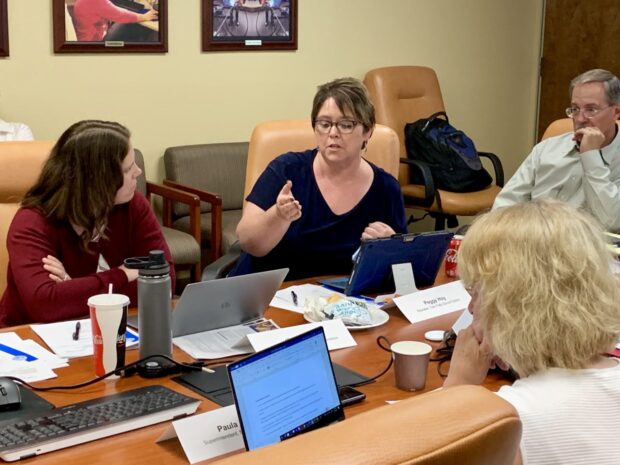Now that she’s invested the time and submitted a lengthy portfolio, the waiting begins for Jonelle Warnock and the hundreds of Idaho teachers hoping to earn a master educator premium.
Created by the Legislature, the master educator premiums are a $4,000 annual salary bonus designed to reward Idaho’s most effective and experienced teachers.
The state will award the premiums for the first time during the upcoming 2019-20 school year.

But first, the 1,405 educators who applied will wait until next month while a group of 323 evaluators review their portfolios to determine if they meet the criteria.
Warnock, a 26-year veteran teacher from Boise, began saving documents and other pieces of evidence for the portfolio application three years ago. She said Boise School District and Boise Education Association officials organized workshops and helped teachers understand the program and the application process.
Warnock estimated she spent 65-75 hours working on the application.
She included her past teacher evaluations, parent emails, professional development records, meeting notes, agendas and records of work she did to help her district develop curriculum.
It was a time-consuming and sometimes frustrating process but she didn’t have to sacrifice her classroom duties.
“I have taught 26 years, have three kids, coached, taught driver’s ed and completed it, and I don’t feel like I let my students down during the process,” Warnock said.
Peggy Hoy, who teaches in Twin Falls, estimated it took her 125 hours to fill out the master educator premium portfolio and application. She particularly valued the opportunity for self-reflection. But she said she wasn’t exactly sure what the state expected to be included in the portfolio, or if her past teacher evaluation results should be included as evidence. Then, as the hours she put in continued to add up, Hoy became frustrated.

“I felt a lot of it was redundant and felt like I was saying the same thing over and over,” Hoy said. “It was overwhelming; that is a good word.”
Warnock agreed the process was confusing, even with support from her district.
She wished state officials could have provided more specifics about what they meant by each characteristic and each artifact that was to be submitted.
“When I give an assignment to my students, I make sure they know the expectations up front,” she said. “I feel like if I didn’t guess what was meant by a rubric item, I might not be right on with that and it scares me a bit.”
State Board officials plan to notify teachers who receive the premiums some time in August. The premiums will be included in 2019-20 salaries, and local districts and charters will determine how to send the money out via their payrolls.
